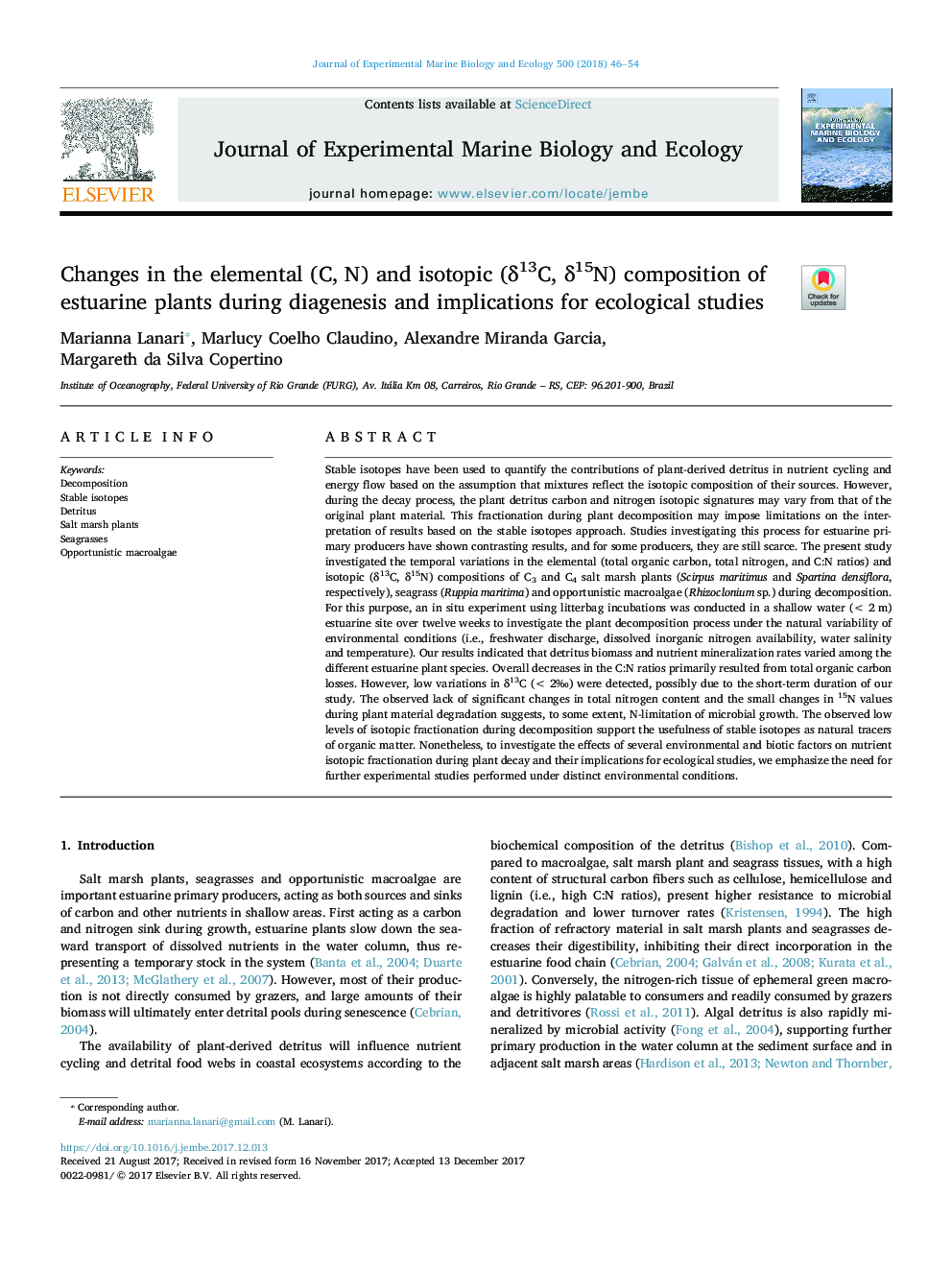| Article ID | Journal | Published Year | Pages | File Type |
|---|---|---|---|---|
| 8848999 | Journal of Experimental Marine Biology and Ecology | 2018 | 9 Pages |
Abstract
Stable isotopes have been used to quantify the contributions of plant-derived detritus in nutrient cycling and energy flow based on the assumption that mixtures reflect the isotopic composition of their sources. However, during the decay process, the plant detritus carbon and nitrogen isotopic signatures may vary from that of the original plant material. This fractionation during plant decomposition may impose limitations on the interpretation of results based on the stable isotopes approach. Studies investigating this process for estuarine primary producers have shown contrasting results, and for some producers, they are still scarce. The present study investigated the temporal variations in the elemental (total organic carbon, total nitrogen, and C:N ratios) and isotopic (δ13C, δ15N) compositions of C3 and C4 salt marsh plants (Scirpus maritimus and Spartina densiflora, respectively), seagrass (Ruppia maritima) and opportunistic macroalgae (Rhizoclonium sp.) during decomposition. For this purpose, an in situ experiment using litterbag incubations was conducted in a shallow water (< 2 m) estuarine site over twelve weeks to investigate the plant decomposition process under the natural variability of environmental conditions (i.e., freshwater discharge, dissolved inorganic nitrogen availability, water salinity and temperature). Our results indicated that detritus biomass and nutrient mineralization rates varied among the different estuarine plant species. Overall decreases in the C:N ratios primarily resulted from total organic carbon losses. However, low variations in δ13C (< 2â°) were detected, possibly due to the short-term duration of our study. The observed lack of significant changes in total nitrogen content and the small changes in 15N values during plant material degradation suggests, to some extent, N-limitation of microbial growth. The observed low levels of isotopic fractionation during decomposition support the usefulness of stable isotopes as natural tracers of organic matter. Nonetheless, to investigate the effects of several environmental and biotic factors on nutrient isotopic fractionation during plant decay and their implications for ecological studies, we emphasize the need for further experimental studies performed under distinct environmental conditions.
Related Topics
Life Sciences
Agricultural and Biological Sciences
Aquatic Science
Authors
Marianna Lanari, Marlucy Coelho Claudino, Alexandre Miranda Garcia, Margareth da Silva Copertino,
